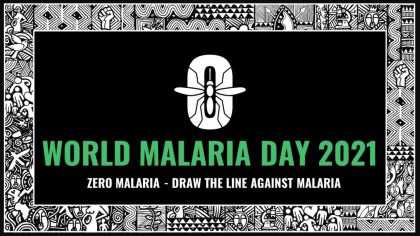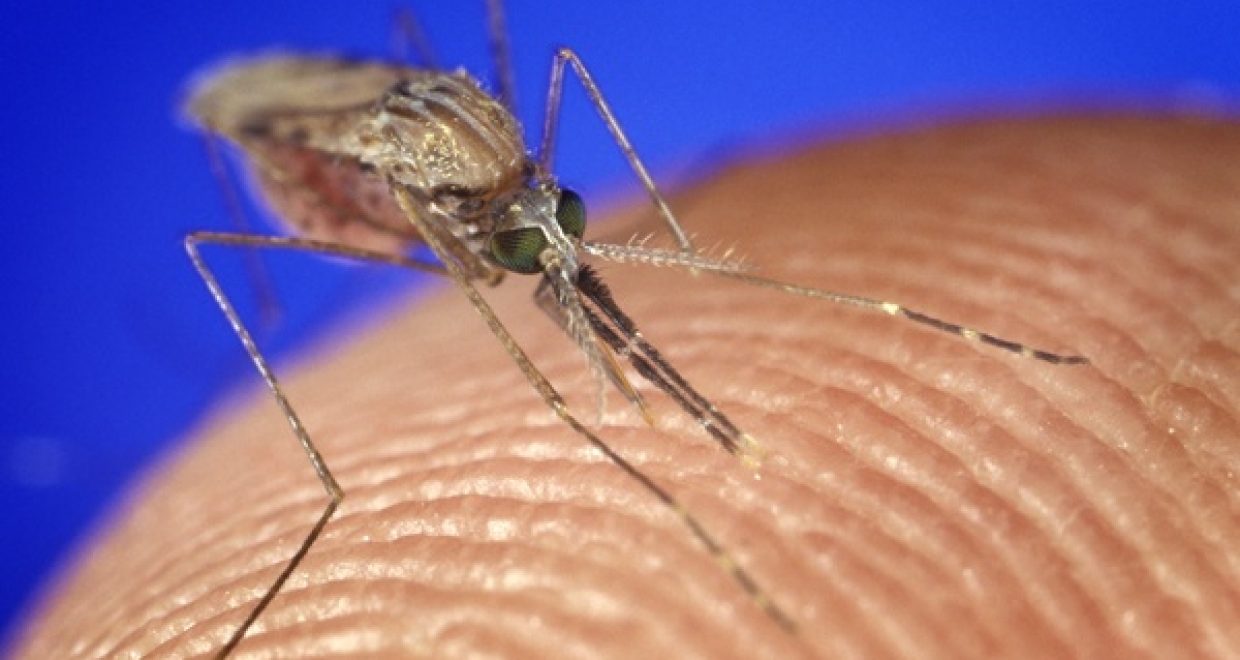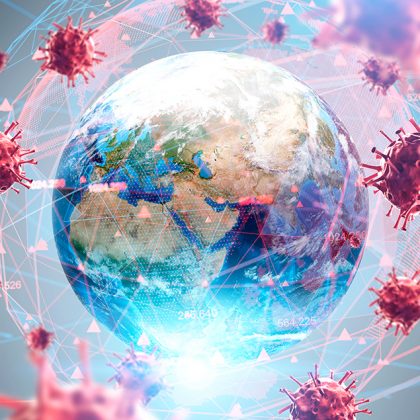World Malaria Day 2021
Sunday, April 25th is World Malaria Day. A day when we celebrate the remarkable successes in the fight against malaria over the past two decades. A day when we pay tribute to all those who have contributed to saving more than 7 million lives. But also a day when we highlight that the job isn’t done. We all have a responsibility to end malaria within a generation: Zero malaria: draw the line against malaria. We all need to take action, by urging our leaders to step up the fight and move us all closer to a malaria-free world.
Why April 25th? Twenty one years ago, 44 African Heads of State and Government met in Abuja, Nigeria, and signed the Abuja Declaration on Roll Back Malaria, committing their countries to cutting malaria deaths in half by 2010. To commemorate the signing of that declaration on April 25th 2000, the day was designated African Malaria Day, which later became recognised by the Member States of the World Health Organisation as World Malaria Day. Every year on 25th April we share information about malaria and celebrate the efforts being made to control this devastating disease. Coincidentally, it is also the day on which the structure of DNA was published in Nature by James Watson and Francis Crick in 1953. And for non-scientists, it’s the birthday of Oliver Cromwell, Pyotr Ilyich Tchaikovsky, and Ella Fitzgerald (at least one of whom (Cromwell) had malaria in their lifetime).
What is malaria? Malaria is a tropical disease that affects half the population of the world. You become infected if you are bitten by a mosquito that carries the parasite. Last year there were over 229 million cases, and more than 400 000 people died of malaria, two thirds of them children under 5 years of age. A child dies of malaria every 2 minutes. Yet malaria is preventable and curable. Diagnosis and treatment of malaria costs less than a cup of coffee on the high street.
Malaria can be controlled and eliminated. Twenty years ago, there were 238 million cases and three-quarters of a million deaths per year in over 100 countries. At the turn of the century, there was increased investment in malaria control, and the development and implementation of new tools, such as insecticide-treated nets, rapid diagnostic tests and artemisinin-based combination therapies. Since then, 21 countries globally have achieved malaria eradication, and 1.5 billion cases have been averted as a result of the global efforts to control the disease. However progress has stagnated, especially in countries that carry a high burden of disease; since 2017 malaria cases have begun to increase. In the past year, the global COVID-19 pandemic has presented additional challenges, as countries with limited resources struggle to maintain services for diagnosis, treatment and control of malaria.
Cambridge University Press recognises the importance of this day and is participating by providing free access to five articles within its journal Parasitology. These papers were selected by Editor Lisa Ranford-Cartwright, showcasing the authors’ efforts in malaria research, control and elimination. The first paper by Chaves and colleagues evaluates the impacts of different health policies on malaria transmission in Costa Rica, a country that is very close to achieving malaria elimination. Encouragingly, the authors found that the majority of policy changes aimed at malaria control had the desired impact on malaria infection rates, although over different time scales. They report that the biggest challenge for malaria elimination in Costa Rica is new outbreaks driven by human movement. The impact of insecticide-treated nets has been a success story for malaria control; WHO recommends a maximum of two people per net, but this is often exceeded. Tamari and colleagues sound a cautionary note that the protection conferred by sleeping under a treated bednet is decreased if more than two people share the net, and indeed the risk of malaria may not be different to not sleeping under a net at all. The paper by McQuaid and Rowe examines rosetting, a parasite behaviour that is strongly associated with severe malaria. The authors evaluate the evidence supporting the role of various human erythrocyte receptors for Plasmodium falciparum rosetting, and the development of adjunctive therapies for severe malaria with rosette-disrupting effects. This thoughtful review identifies key areas for future research, aided by technical advances. Healer and colleagues focus their paper on approaches to identifying antigenic targets of naturally-acquired antibodies to human malaria parasites in the blood, which could lead to the development of novel vaccines. The final paper by Daneshvar and colleagues reminds us that not all human malaria cases and deaths are due to Plasmodium falciparum – the zoonotic species Plasmodium knowlesi has emerged as an important cause of morbidity and mortality in South East Asia. In their paper, the authors review the clinical features and management of P. knowlesi infections. While our focus today is on human malaria, please note also the journal’s interest in non-human malaria parasites, for example the online collection of papers on avian malaria.
On World Malaria Day we mark our progress in the fight against malaria, and congratulate those countries that have achieved malaria elimination. Their progress inspires us to believe that zero malaria is within reach for all countries, building on what we have learnt, and on new skills and knowledge that is being developed.
Featured papers:
Chaves, L., Ramírez Rojas, M., Prado, M., Garcés, J., Salas Peraza, D., & Marín Rodríguez, R. (2020). Health policy impacts on malaria transmission in Costa Rica. Parasitology, 147(9), 999-1007.
Tamari, N., Minakawa, N., Sonye, G., Awuor, B., Kongere, J., Munga, S., & Larson, P. (2019). Antimalarial bednet protection of children disappears when shared by three or more people in a high transmission setting of western Kenya. Parasitology, 146(3), 363-371.
McQuaid, F., & Rowe, J. (2020). Rosetting revisited: A critical look at the evidence for host erythrocyte receptors in Plasmodium falciparum rosetting. Parasitology, 147(1), 1-11.
Healer, J., Chiu, C., & Hansen, D. (2018). Mechanisms of naturally acquired immunity to P. falciparum and approaches to identify merozoite antigen targets. Parasitology, 145(7), 839-847.
Daneshvar, C., William, T., & Davis, T. (2018). Clinical features and management of Plasmodium knowlesi infections in humans. Parasitology, 145(1), 18-31.






